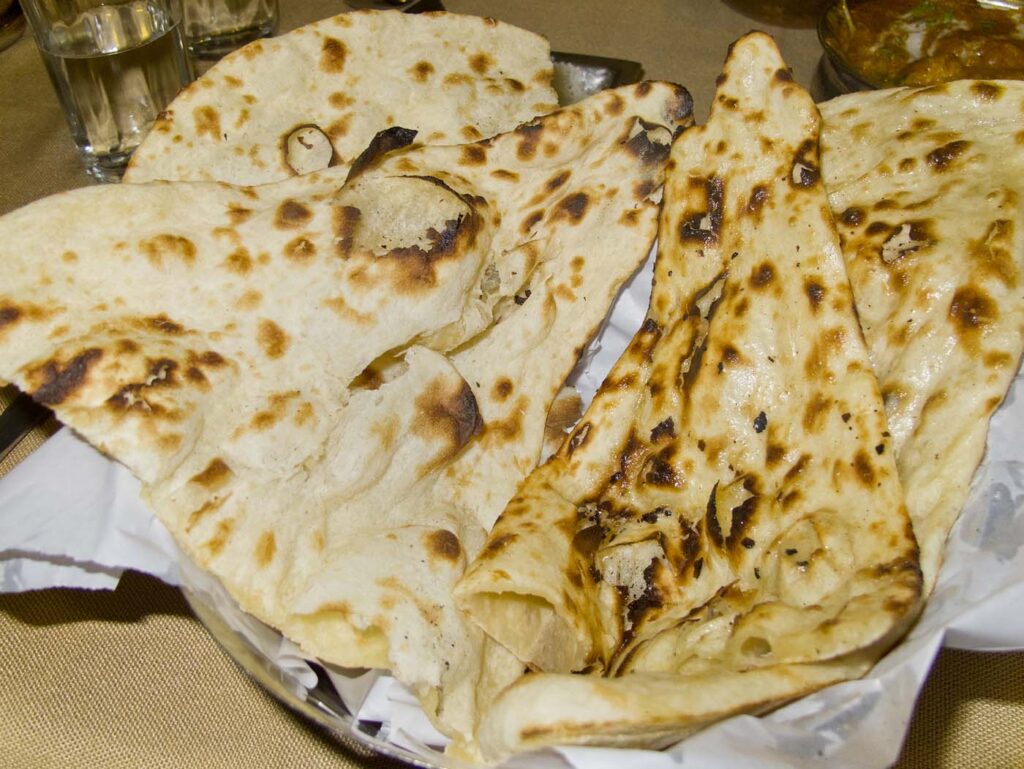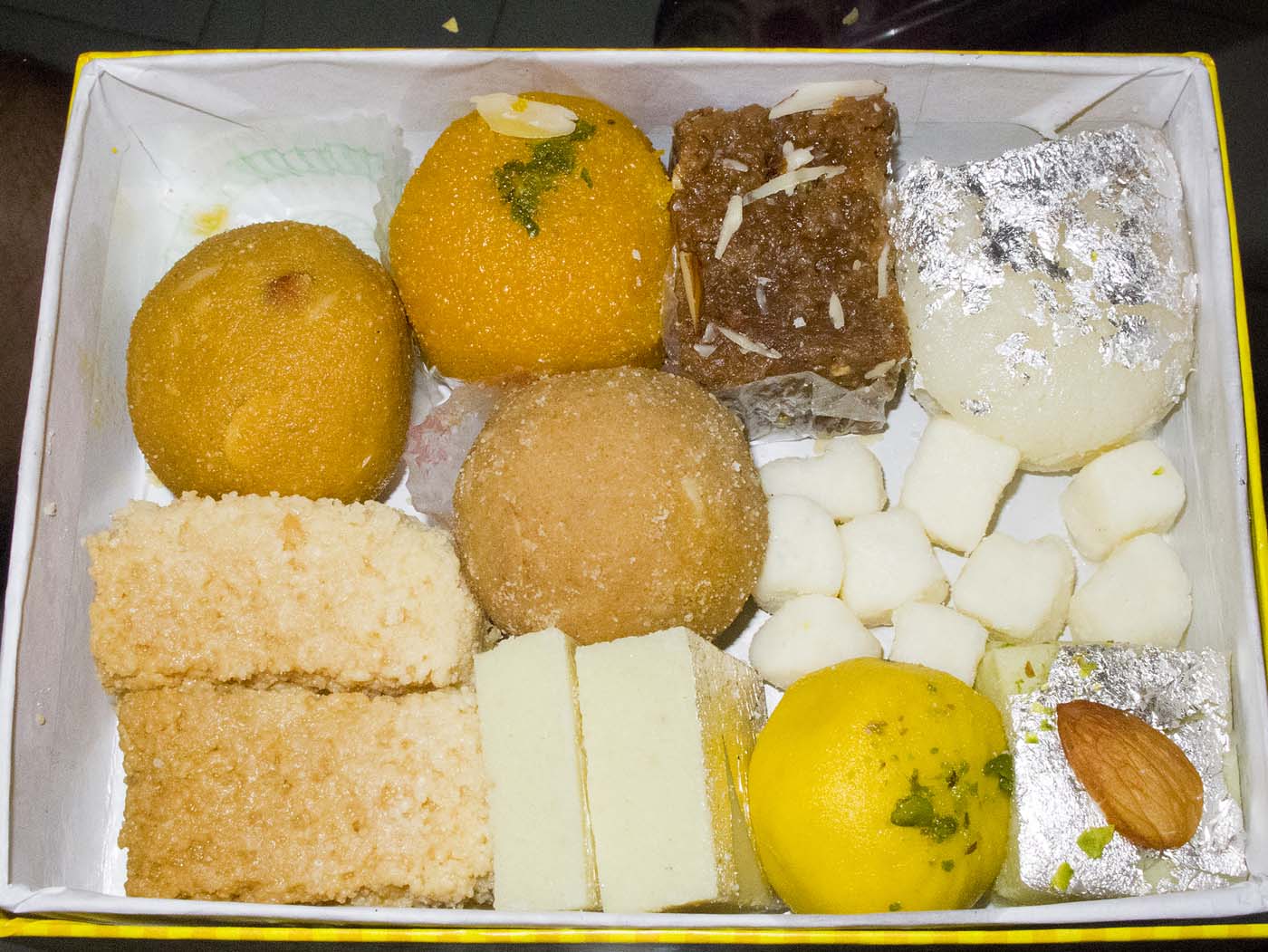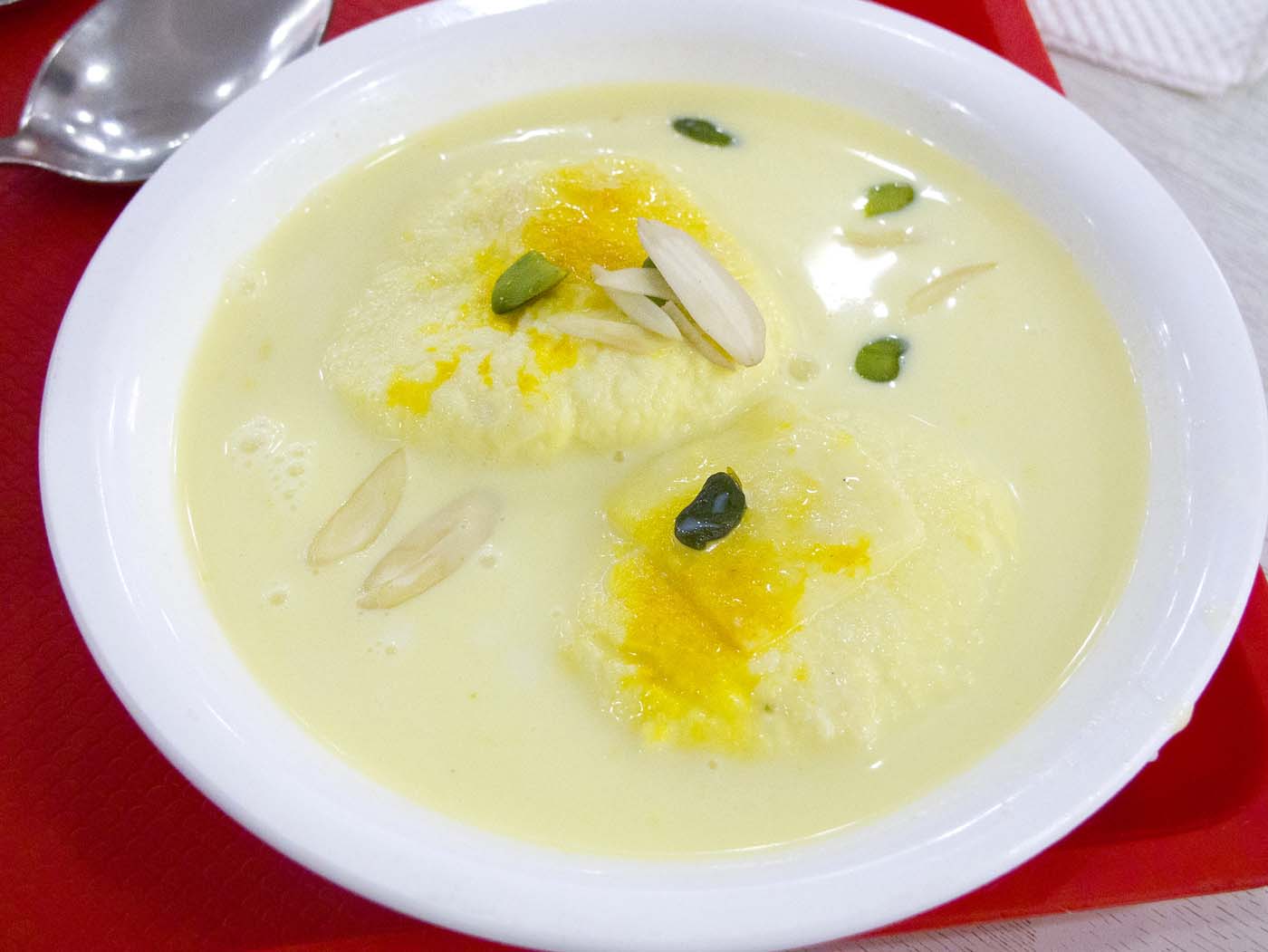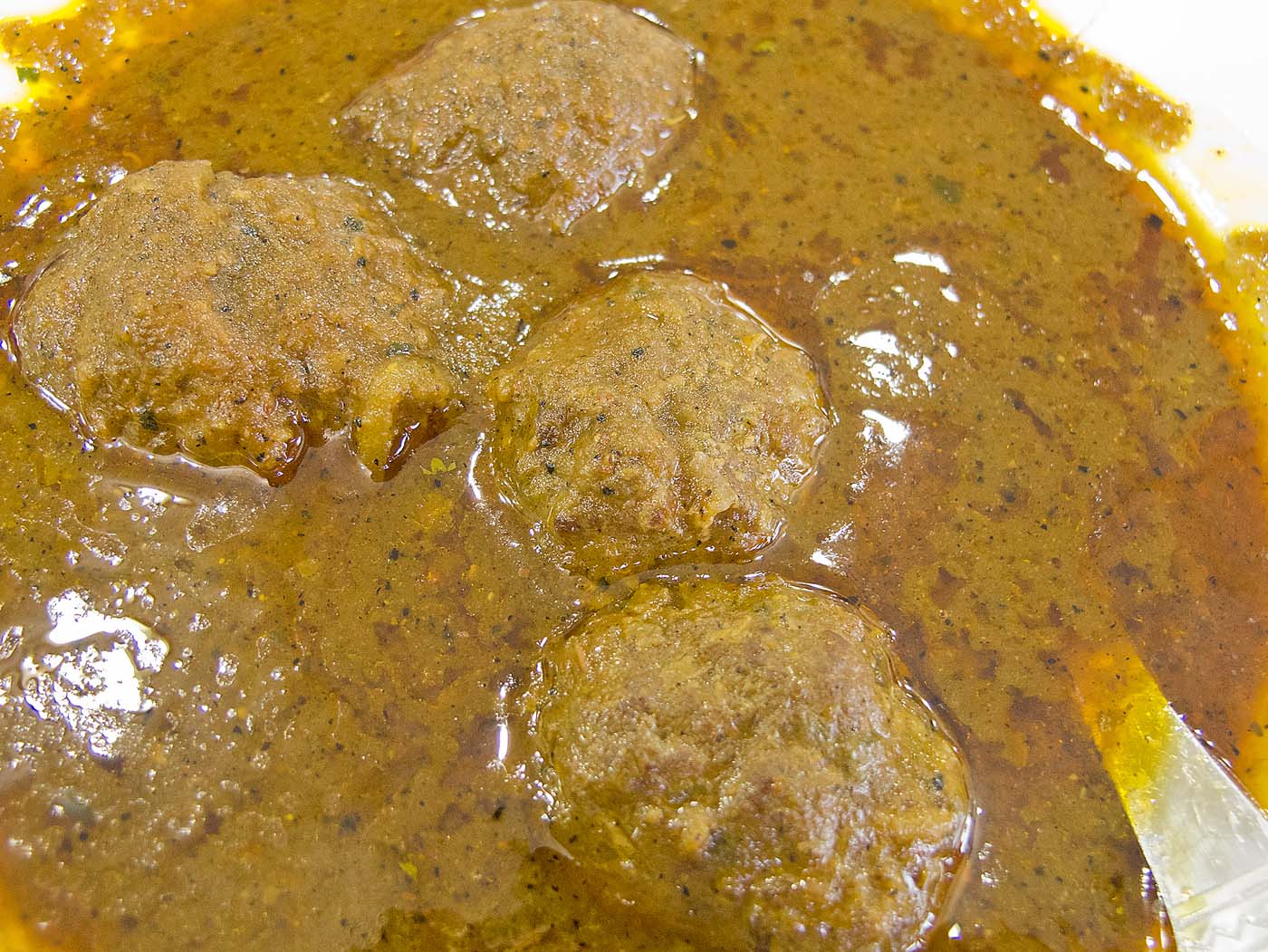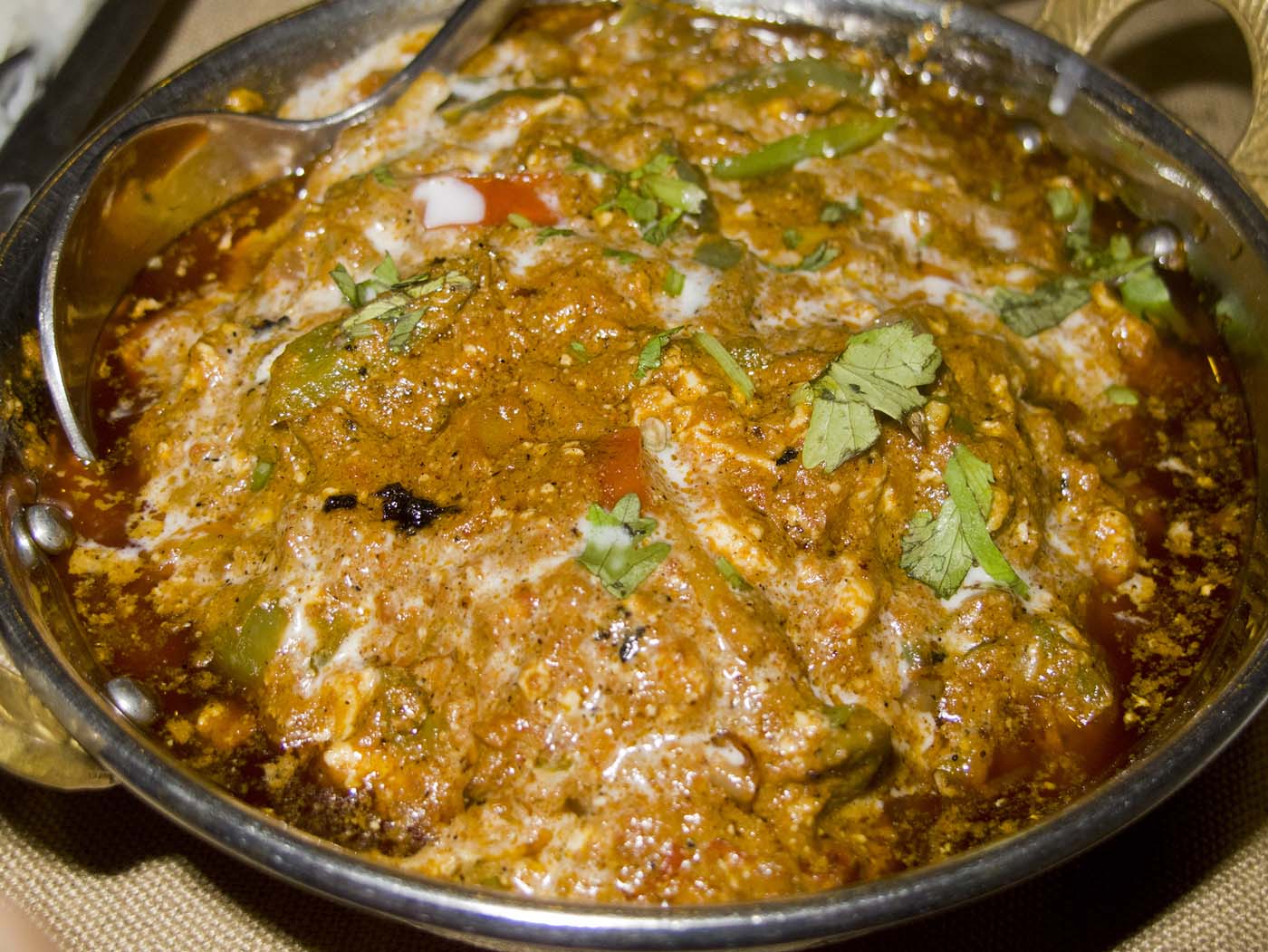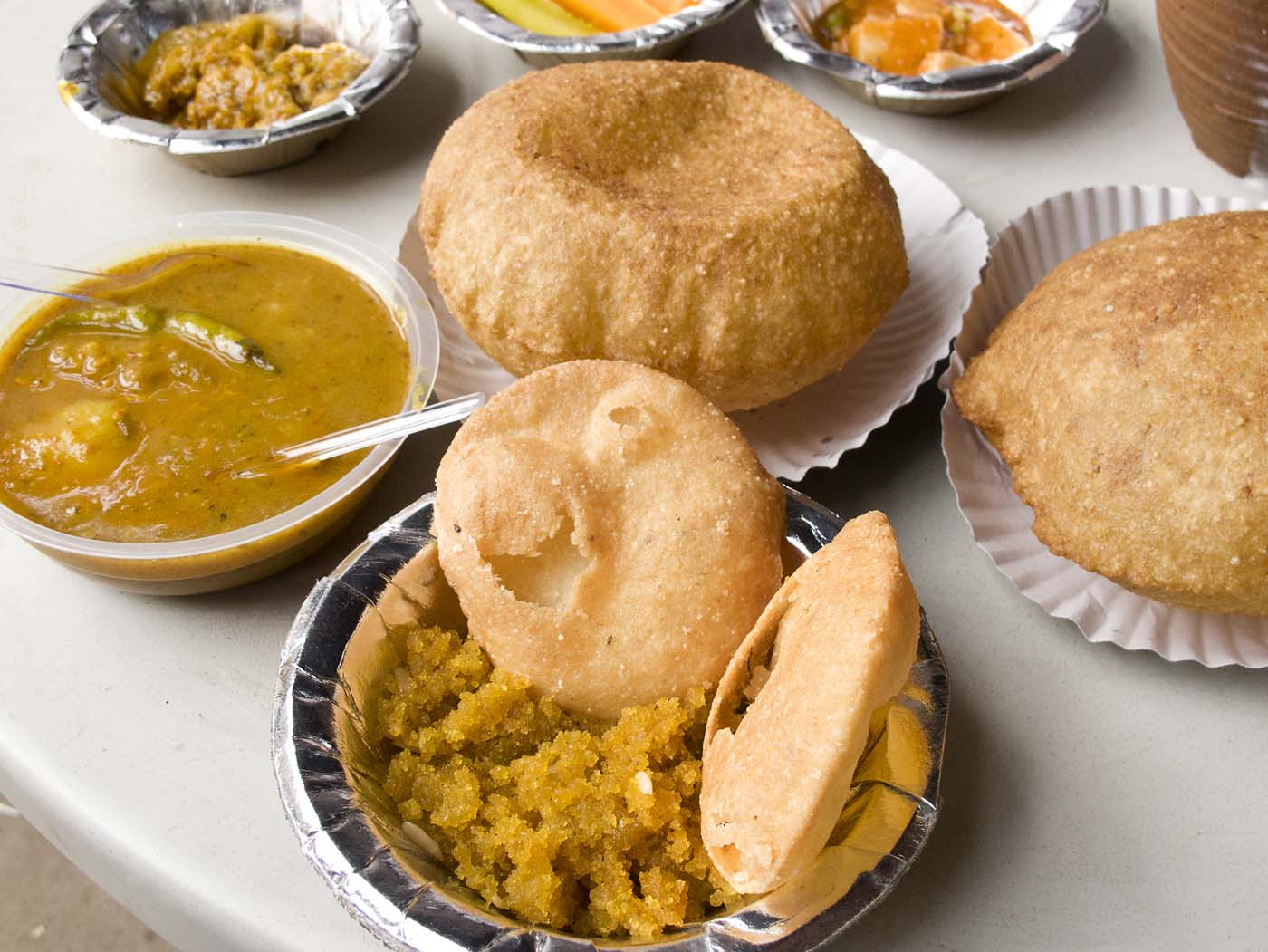In North India, the sidekick to those thick curries is always bread, not rice. Rice is often available, should you prefer it, but there’s nothing like a hot piece of freshly made flatbread for scooping and mopping up a saucy dish—it is how the food here’s been eaten for centuries. So to eat like a local here, skip the rice and get to know the various wonderful types of Indian breads in Delhi.
The most common served-on-the-side breads you’ll be dealing with in Delhi (as well as at any North Indian restaurant anywhere) include naan, roti, and chapati. But what are these Indian breads each used for? If you’ve ever wondered the difference between roti vs. naan, read on.
Naan is a soft, leavened flatbread made of white flour that’s traditionally cooked in a tandoor, or clay oven. It’s generally offered either plain, buttered, or stuffed—with, say, garlic, aloo (potato), or minced mutton (which is then called keema, or qeema, naan). It’s the most pillowy and bready of the common flatbreads, and in India, it is more often eaten for special occasions, at restaurants more than in the home.
Roti and chapati are both unleavened wheat-flour breads rolled out much thinner than naan and cooked on a tawa, or flat griddle. Roti and chapati are so similar as to be interchangeable in name (technically, chapati is a type of roti), and so popular that the average North Indian will have some at every meal. (These remind me of Latin American tortillas a bit in this way.)
Missi roti in Udaipur
Roti, however, has quite a few varieties, including the fluffy tandoori roti, cooked in the tandoor (and more akin to naan to texture), and the roomali roti, which is rolled out extra thin and often acts as the wrap in those delicious kebab rolls.
There’s also missi roti, made with chickpea flour. Sheermaal is yet another bread you’re likely to encounter, particularly in Muslim-Mughlai restaurants: A sweet variety of naan made with saffron, sheermal hails from Lucknow in nearby Uttar Pradesh.
Paratha is another important Indian bread to know, so essential we have a separate page dedicated to it in this guide. However, paratha is different from naan, roti, and chapati in that it is less an accompaniment to dishes as it is its own standalone dish. It’s pan-fried and more decadent—typically a round unleavened flatbread made from wheat flour, stuffed with veggies and/or paneer, and served with a whole host of accoutrements. (Read more about paratha here.)
Besides these pillars of Indian flatbreads, there are many other types of bread in North India, some of which we feature elsewhere in our New Delhi food guide: Also see bedmi in bedmi-aloo, bhature in the iconic chole bhature, and kulche in chole kulche. Over in Mumbai, pav, similar to a soft hamburger bun, is super popular; check out our post on Mumbai’s street eats to see some typical dishes made with it.
Don’t miss our detailed post on the blog about regional Indian bread types.
WATCH: A whirlwind one-minute trip through Delhi, Agra, and Udaipur in North India.
Where: Any restaurant in Delhi serving North Indian food will carry most of these breads, but for illustrative purposes, ours is from Pindi (2338-7932; 16, Pandara Rd. Market, map), one of several good Punjabi restaurants on famed Pandara Road, just south of India Gate in central Delhi.
When: Daily, noon-1am
Order: Pictured is the hot plain naan (110 rupees) and butter naan (150 rupees), the latter an exceptionally decadent brand of bread, coated in butter. (Note that this is a relatively upscale restaurant, so prices are on the high side.)
These naans were particularly delicious alongside Pindi’s butter chicken and kadhai paneer (yes, we are recommending you pair butter naan with butter chicken). The restaurant offers lots of other breads too, including garlic, gobi (cauliflower), and aloo naan; keema naan; butter, roomali, and tandoori roti; and tandoori kulcha.
Alternatively: Again, we could list a hundred restaurants here. But you’ll find a wide variety of breads—regular naan and roti, sheermaal, roomali roti, tandoori roti, often keema naan—at such Mughlai-derived restaurants as Al-Jawahar (2327-5987; Bazaar Matia Mahal, opposite Gate 1, Jama Masjid, map) and Karim Hotel (Gali Kababian, Jama Masjid, map), both in Old Delhi; as well as Purani Dilli (2698-3371; 371 Main Rd., Zakir Nagar, Jamia Nagar, map) in Zakir Nagar, a mazelike Muslim enclave in South Delhi.
PIN THIS FOR LATER
Updated: March 5, 2024

